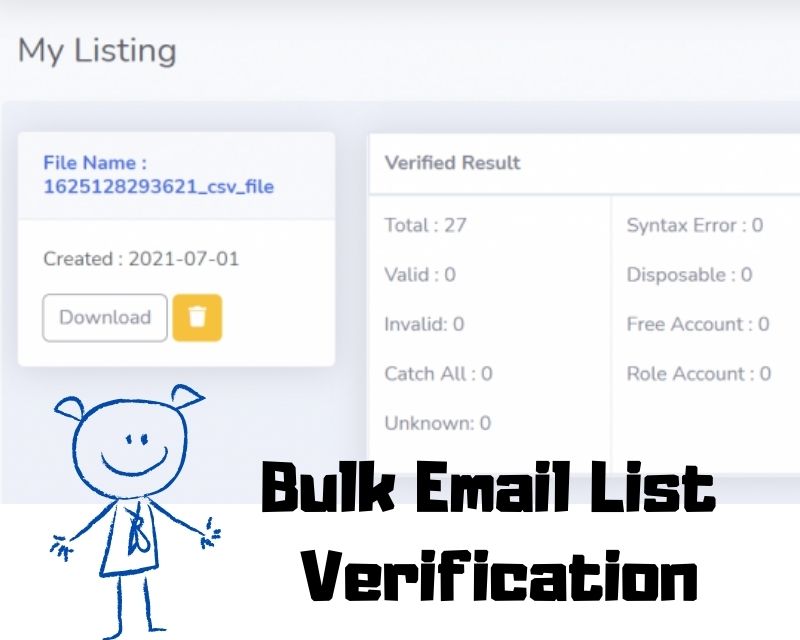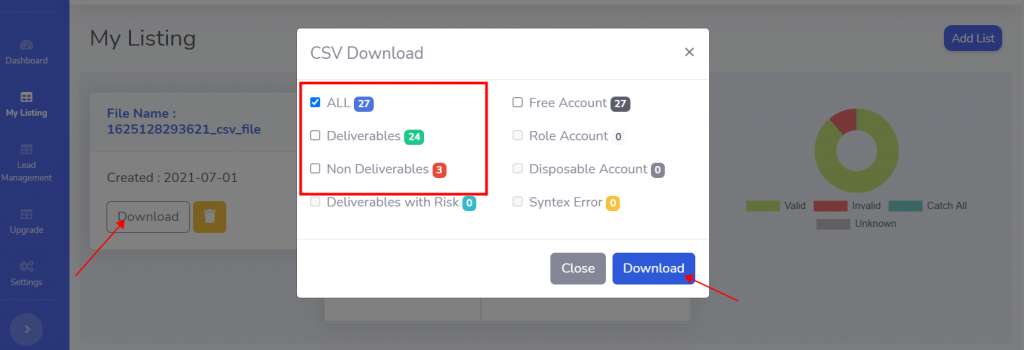A lot of things need to be done cold turkey to be successful. Salespeople tend to optimize the sales part – polishing their offers, carefully selecting targets, creating a sequence where they can’t say “no.” They tend to forget one tiny detail – none of this will work if the email doesn’t reach the recipient’s inbox.
Countless studies on email deliverability have found that there are dozens of factors that affect whether your emails will arrive. Some will take months to improve, while others can be improved with just a little effort on your part. Let’s take a look at what really matters when the decision is in your hands.
How does email send into your inbox?
If you’ve ever emailed yourself, you know how fast the process can be. It may seem like the easiest thing in the world, but that’s far from the truth.
Simply put, an email travels a considerable distance before it finally reaches the recipient. It hops from server to server and is verified by spam filters at each step of the journey. Every intermediary has the right to reject an email whenever it thinks something is wrong.
Many times, that’s true. According to the latest 2020 email deliverability benchmark, only 84% of emails worldwide make it to the inbox.
The importance of email deliverability for cold outreach
When you send thousands of emails, your success depends heavily on the deliverability of your campaign. To make a single sale, you may need to send hundreds of emails, or even thousands. With such low conversion rates, every tiny detail counts.
The good news is – chances are you’ve done a lot to improve your emails, every time. You’re polishing every word, A/B testing subject lines, trying different send times, experimenting. Keep doing this and you’ll undoubtedly see results.
Improving your deliverability rate will take some more effort to incorporate into your daily routine.
It’s definitely a proper email warm-up, even if you’ve been sending for a while. It is absolutely essential to verify your emails before sending them. There are many other things that can be improved with a little effort on your end.
At the end of the day, even one extra email into the inbox can lead to an opportunity. It’s more than worth your effort.
How to keep a good Email Sender Reputation?
Arguably the number one factor that everyone should be concerned about is what is called email reputation (aka sender reputation). With billions of registered email addresses, this network is huge and ever-growing. It is quite easy to remain anonymous on such a large network. However, anonymity is exactly what keeps our emails from being delivered.
The first “question” a spam filter asks when you send an email is: “How do we know we can trust you? Even the greatest sales pitch won’t help if you don’t have a lot to back up your credibility.
Email Service Providers (ESP) look at the sending history of:
- Your email address
- All accounts on your domain
- The IP address you use for sending emails and the tool/servers you use for sending
What you can do to protect your email reputation?
#1 Verify emails before sending them

Before you start your email campaign, there is one thing that you should do is verify your email lists.
One thing that can potentially ruin the deliverability of email is sending emails to addresses that don’t exist. In the digital eyes of spam filters, this is very similar to the behavior of various spammers who scrape web pages and then send their “offers” to any address that looks like an email.
Of course, many of these emails no longer exist, or never existed in the first place. Mailbox providers are quick to notice and give senders more time the next time they try to send their emails.
This aspect of email deliverability can be intense for apathetic email senders – after all, you can’t always be sure of the recipient’s existence. If you pull your outreach list from some suspicious source or try to guess your target address, you may already be at a disadvantage.
Free email verifies online tool recommendations.
>>The Best Free Unlimited Email Verifier Online in 2021
#2 Clean your email list
After you verified your email list, the next thing you need to do is to clean your email list.
The idea, of course, is not to send emails to addresses that don’t exist, because the results will be pretty obvious. But you can do more than that.
I also encourage you to exclude these people.
- Those that can’t pass verification for other reasons.
- Often can’t accept your emails because their inbox is always full.
- Always treat you with the “I don’t work here anymore, just go away” auto-response.
- Never open without replying to you, or simply saying they’re not interested.
Some of these may sound counter-intuitive. After all, why would you want to remove someone from your list who does keep ignoring your efforts but might respond someday?

The thing is, response and open rates are also important to your sender’s reputation. Email servers prefer senders who interact with their emails – recipients open them, forward to each other, reply, click on links, etc.
This doesn’t happen very often for cold emails anyway. If you care about deliverability rates, it’s worth removing yourself from some of the hopeless cases. If you don’t, they may end up marking you as spam, which is much worse than an unopened email.
#3 Avoid blacklists and spam traps
A long time ago, email companies set up many email addresses and spread them around the web. These were not the usual addresses – you wouldn’t get a reply from them and they wouldn’t open your emails. But trying to send anything to them can lead to an unpleasant surprise.
When a spam trap receives your email, it immediately records your address and blacklists it. Such lists are shared with mail servers, which eagerly look for them when processing your emails.
Being blacklisted does not necessarily mean that your emails will be rejected. However, if you get on one of these prominent lists, or guest post on multiple lists, your sender reputation will suffer and you will likely find yourself in considerable trouble.
#4 Be consistent
As you can see now, mailbox providers have a fairly long list of preferences. However, this one is probably the easiest one to match.
Spammers don’t care much about consistency. After scouring the Web over and over again, they have thousands of emails ready to receive their wonderful messages. They rarely wait longer than necessary – instead, they start firing on all cylinders and flooding the network with their emails.
Mail servers are well aware of this, and they tend to stop this wave of email from the beginning. In fact, they tend to block anything that doesn’t exactly match the sender’s previous activity.
For example, if you have been hiding for a while but suddenly decide to send thousands of cold emails, it will look completely suspicious. The same would be true if you had sent a large number of emails, disappeared for a few months, and then suddenly came back with the same number as before.
This has nothing to do with volume per se. Big brands like HubSpot send thousands of emails to their subscribers every day. However, they aren’t penalized for it because they keep doing it every week. That’s what you should be doing too.

